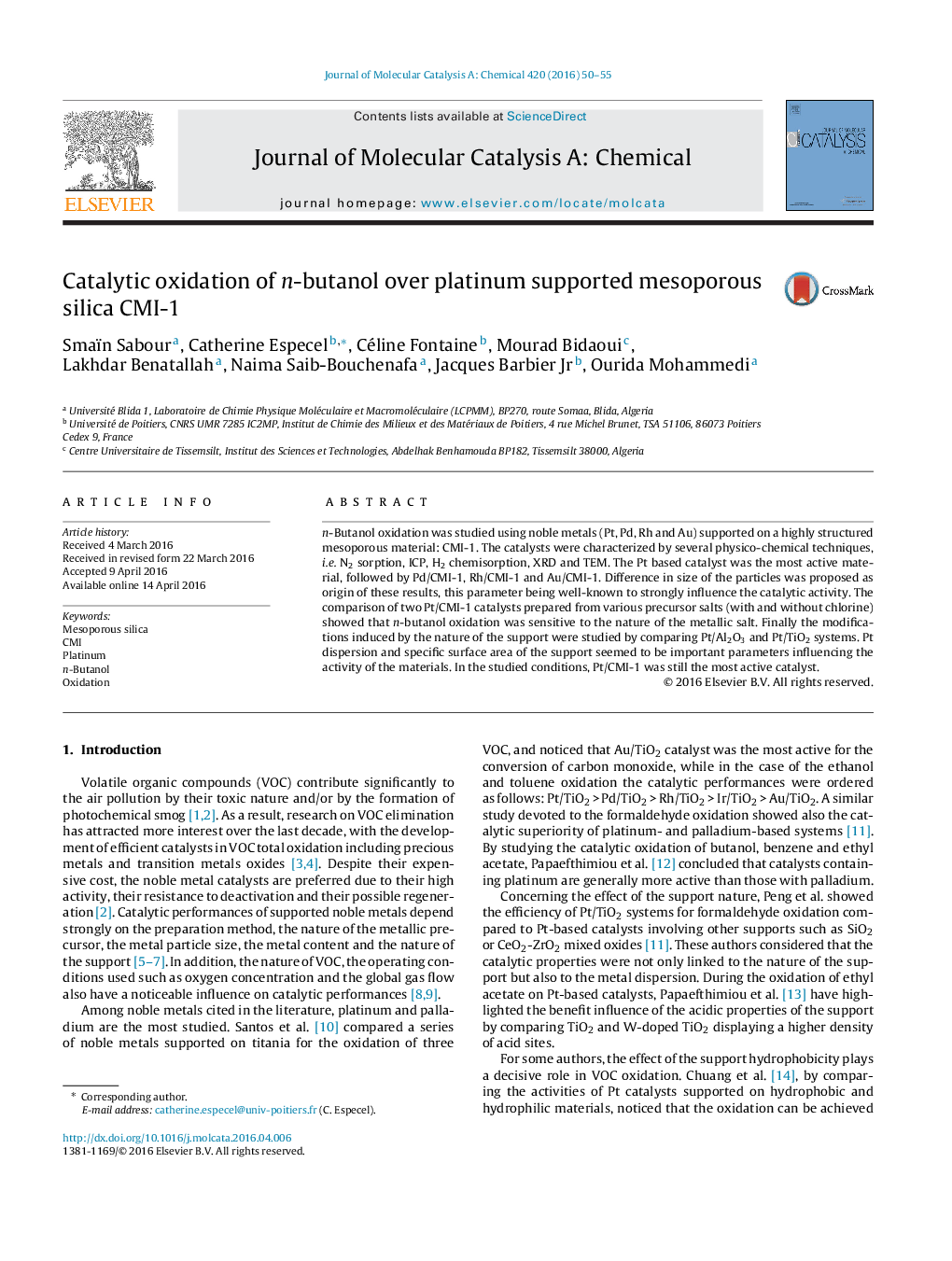| Article ID | Journal | Published Year | Pages | File Type |
|---|---|---|---|---|
| 64576 | Journal of Molecular Catalysis A: Chemical | 2016 | 6 Pages |
•Total oxidation of n-butanol was studied on mesoporous silica-supported catalysts.•The conversion varied as follows according to the metallic phase: Pt > Pd > Rh > Au.•For the Pt/CMI-1 synthesis, the use of a Cl-based salt led to a less active sample.•The catalytic behavior of Pt catalysts supported on various supports was compared.•The Pt-based systems activity was governed by the support specific surface area.
n-Butanol oxidation was studied using noble metals (Pt, Pd, Rh and Au) supported on a highly structured mesoporous material: CMI-1. The catalysts were characterized by several physico-chemical techniques, i.e. N2 sorption, ICP, H2 chemisorption, XRD and TEM. The Pt based catalyst was the most active material, followed by Pd/CMI-1, Rh/CMI-1 and Au/CMI-1. Difference in size of the particles was proposed as origin of these results, this parameter being well-known to strongly influence the catalytic activity. The comparison of two Pt/CMI-1 catalysts prepared from various precursor salts (with and without chlorine) showed that n-butanol oxidation was sensitive to the nature of the metallic salt. Finally the modifications induced by the nature of the support were studied by comparing Pt/Al2O3 and Pt/TiO2 systems. Pt dispersion and specific surface area of the support seemed to be important parameters influencing the activity of the materials. In the studied conditions, Pt/CMI-1 was still the most active catalyst.
Graphical abstractFigure optionsDownload full-size imageDownload high-quality image (108 K)Download as PowerPoint slide
